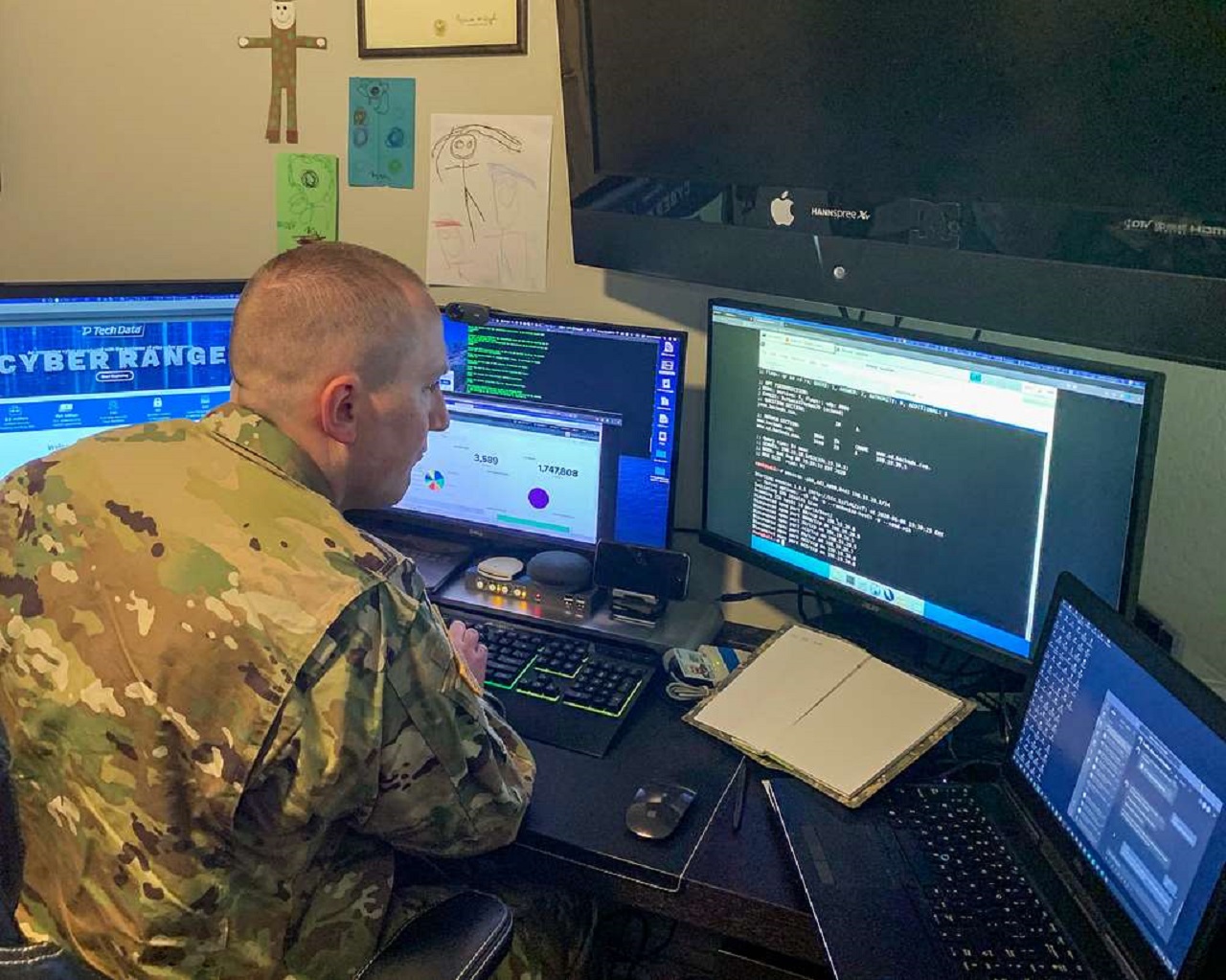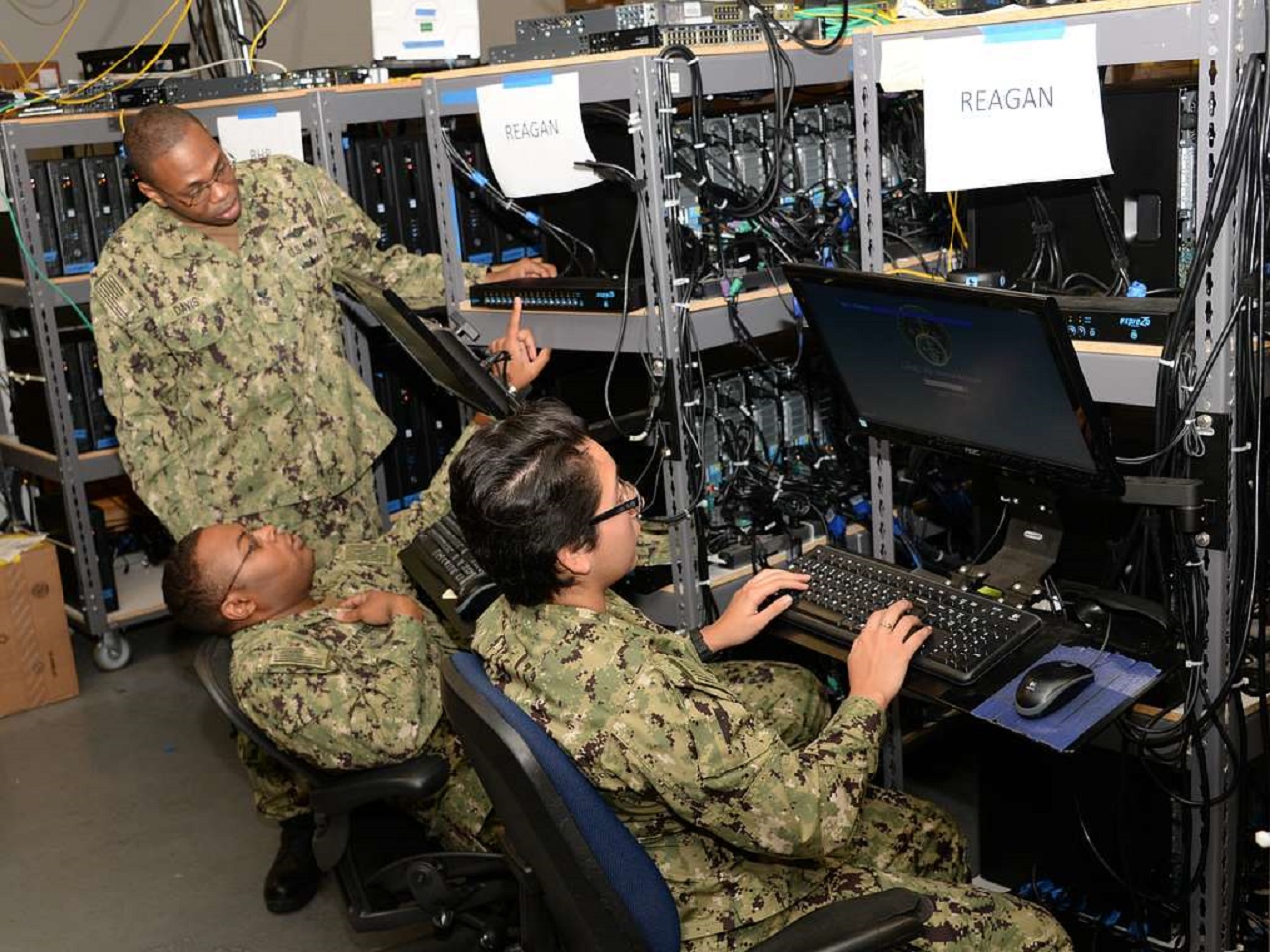
Cybersecurity has become a critical concern in today's world, with the ever-increasing frequency and sophistication of cyber attacks.
This article delves into a comprehensive analysis of the current state of cybersecurity, focusing on its significance in military cyber defense, the role of Cyber Threat Intelligence, the implementation of network security solutions, global cyber warfare strategies, and secure communication protocols designed to prevent cyber attacks.
By examining these aspects thoroughly and objectively, this article aims to provide informative insights into the vital field of cybersecurity.
Key Takeaways
- Cyber Threat Intelligence provides valuable insights and actionable information on potential cyber threats and vulnerabilities, enabling informed decision-making about cybersecurity posture.
- Implementing effective network security solutions requires understanding the current threat landscape and deploying robust defense mechanisms such as endpoint protection, cloud security, network monitoring, and intrusion detection and prevention systems.
- Strategies and tactics in cyber warfare involve offensive operations to infiltrate, disrupt, or destroy adversary's digital infrastructure, as well as defensive operations to safeguard against offensive actions and mitigate their impact.
- Secure communication protocols, such as encrypted messaging and secure email protocols, are essential for cyber defense, protecting the confidentiality, integrity, and privacy of transmitted messages and sensitive information.
The Importance of Cyber Threat Intelligence
Cyber threat intelligence plays a crucial role in providing organizations with valuable insights and actionable information regarding potential cyber threats and vulnerabilities. It encompasses the collection, analysis, and dissemination of data related to cyber threats, enabling organizations to make informed decisions about their cybersecurity posture.
Cyber threat detection involves monitoring network activities and identifying any suspicious or malicious behavior that could indicate an ongoing or imminent cyber attack. This proactive approach allows organizations to detect threats early and take necessary measures to mitigate the risks effectively.
Furthermore, intelligence sharing facilitates collaboration between different entities, such as government agencies, private sector companies, and international partners. By sharing information on emerging threats and attack techniques, organizations can collectively enhance their defenses against cyber adversaries while fostering a culture of cooperation in combating evolving cyber threats.
Implementing Effective Network Security Solutions
Implementing effective network security solutions requires a comprehensive understanding of the current threat landscape and the deployment of robust defense mechanisms. To ensure the protection of sensitive data and prevent unauthorized access, organizations must consider the following:
Endpoint protection: This involves securing individual devices, such as laptops, smartphones, and tablets, that connect to a network. Implementing endpoint security measures like encryption, anti-malware software, and regular software updates can help mitigate potential vulnerabilities.
Cloud security: As more organizations rely on cloud-based services for storage and computing power, ensuring the security of cloud environments becomes crucial. Encryption protocols and access controls should be implemented to protect data stored in the cloud from unauthorized access.
Network monitoring: Continuous monitoring of network traffic can help detect any suspicious activities or anomalies that may indicate a cyber-attack. Intrusion detection systems (IDS) and intrusion prevention systems (IPS) can be deployed to identify potential threats in real-time.
By implementing these network security solutions effectively, organizations can strengthen their defenses against cyber threats and safeguard their valuable information from compromise or exploitation.
Strategies and Tactics in Cyber Warfare
Strategies and tactics in cyber warfare involve the utilization of various methods and techniques to ensure the protection of sensitive information and maintain the integrity of communication networks.
Offensive operations in cyber warfare refer to actions taken by attackers to infiltrate, disrupt, or destroy an adversary's digital infrastructure. These operations may include deploying malware, conducting phishing attacks, or exploiting vulnerabilities in software systems.
On the other hand, defensive operations focus on safeguarding against these offensive actions and mitigating their impact. This includes implementing firewalls, intrusion detection systems, and encryption protocols to detect and prevent unauthorized access.
Additionally, organizations employ incident response plans to quickly identify and respond to cyber threats, minimizing potential damage.
By employing a combination of offensive and defensive strategies, military forces can effectively protect their digital assets from hostile actors in the evolving landscape of cyber warfare.
Secure Communication Protocols for Cyber Defense
Communication protocols play a crucial role in ensuring the security and integrity of digital networks by providing mechanisms that prevent cyber attacks.
One important aspect of secure communication protocols is encrypted messaging, which involves the use of encryption algorithms to protect the confidentiality and privacy of messages being transmitted over a network. Encrypted messaging ensures that only authorized recipients can access the content of the messages, making it difficult for attackers to intercept or tamper with sensitive information.
Another vital component is secure email, which employs encryption techniques to safeguard email communications from unauthorized access. Secure email protocols enable users to send and receive emails securely, preventing interception or manipulation by malicious actors.
By implementing these secure communication protocols, organizations can enhance their cyber defense capabilities and protect their sensitive data from potential threats.
To effectively safeguard sensitive information, organizations must adhere to best practices in cybersecurity.
One crucial aspect of safeguarding data is the implementation of data encryption techniques. Encryption converts plain text into an unreadable format, making it inaccessible to unauthorized individuals and ensuring the confidentiality and integrity of the information. Robust encryption algorithms are essential for protecting sensitive data, especially during transmission or storage.

Additionally, employee awareness plays a vital role in maintaining cybersecurity. Organizations should provide comprehensive training programs that educate employees about potential threats, such as phishing attacks or social engineering tactics. By promoting a culture of vigilance and accountability, organizations can empower their workforce to identify and report suspicious activities promptly.
Regular security awareness training sessions can help employees stay updated with emerging threats and understand their responsibilities in maintaining a secure digital environment.
Frequently Asked Questions
What are the key challenges in gathering and analyzing cyber threat intelligence?
Challenges in gathering and analyzing cyber threat intelligence include the vast amount of data to sift through, the difficulty in distinguishing between credible and false information, and the constantly evolving nature of cyber threats requiring continuous monitoring and analysis.
How do organizations prioritize and allocate resources for implementing network security solutions?
Organizations prioritize and allocate resources for network security solutions based on various factors such as risk assessment, budget constraints, regulatory requirements, and the value of assets being protected. This ensures a comprehensive approach to network security implementation.
What are some examples of cyber warfare strategies employed by different countries?
Cyber warfare strategies employed by different countries have significant political implications and are influenced by technological advancements. Examples include disruptive attacks on critical infrastructure, espionage through hacking, and the spread of disinformation to manipulate public opinion.
How do secure communication protocols ensure confidentiality and integrity of data in cyber defense?
Secure communication protocols ensure the confidentiality and integrity of data in cyber defense by utilizing encryption methods, data protection measures, and network security protocols. These safeguards prevent unauthorized access to sensitive information and ensure secure data transmission, maintaining data privacy and integrity.
Common mistakes in safeguarding sensitive information in cybersecurity include weak passwords, lack of employee training, failure to update software regularly, and inadequate backup systems. Best practices involve implementing strong security measures, conducting regular risk assessments, and educating employees about potential threats.
 GadgetsProduct ReviewsSmart DevicesDronesVirtual DevicesPrivacy PolicyTerms And Conditions
GadgetsProduct ReviewsSmart DevicesDronesVirtual DevicesPrivacy PolicyTerms And Conditions
